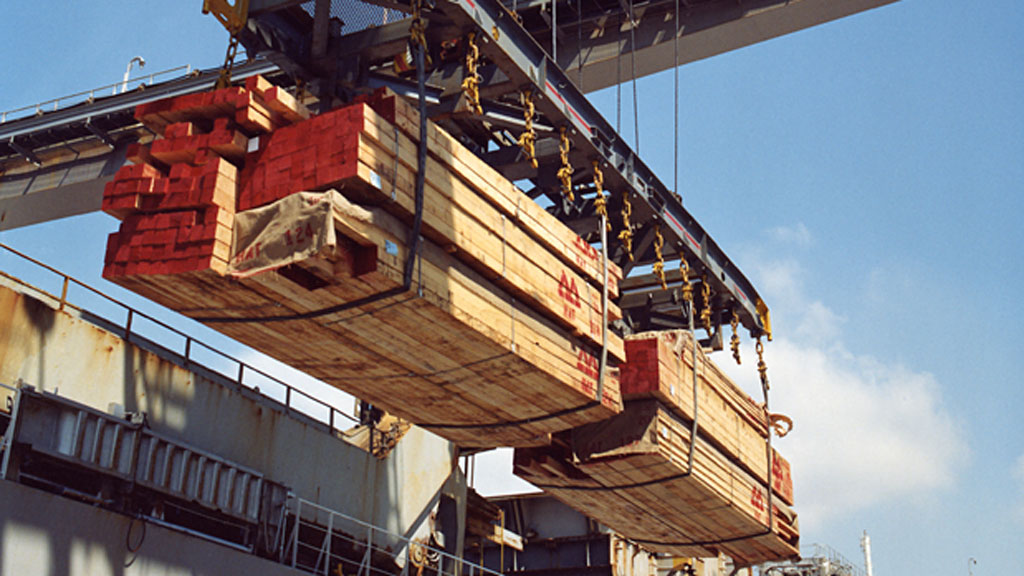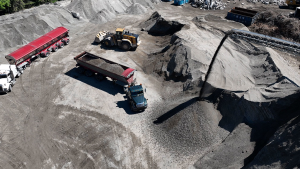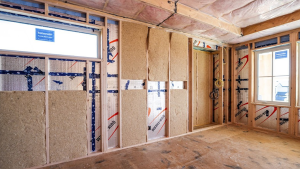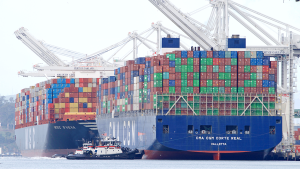Those seeking more stable lumber prices had little time to relax as a variety of forces, including historic floods in B.C. and double-digit U.S. duties, sent prices skyrocketing once again.
Jennifer Cotton, executive director for the Fraser Valley region of the Canadian Home Builders’ Association, explained analysts, experts and members see no relief in sight after stabilizing prices shot up.
“This is just such a volatile industry when it comes to this anyway, so any little blip in it creates a ripple effect,” said Cotton. “The flooding spun things off a bit in a chaotic way.”
The Insurance Bureau of Canada believes the insured damage caused by the rainstorms totals $450 million, calling it the “most costly severe weather event in the province’s history.”
All routes to the Lower Mainland were impacted, including Highway 1, Highway 99, the Coquihalla Highway and the Malahat Highway on Vancouver Island.
The November storms came just as prices were starting come down following massive spikes.
“They are creeping up again and there is no anticipation of that slowing down or staving off at all,” she said.
According to the province, current prices for spruce-pine-fir (SPF) 2x4s is US$1,170. In the months leading up to the floods, the cost was less than US$650. The annual average in 2020 was US$567 and in 2021 it was US$881.
Cotton said not only did transportation problems due to flooding cause this, but there is a considerable backlog for materials locally and overseas. When this happens, suppliers have to buy from their competitors at elevated prices which are passed on to the customer.
Cotton said the City of Abbotsford has seen 40 construction applications related to the floods alone, which itself will put even more heat on the market. The good news is that builders have found ways to sort out price volatility when it comes to contracts.
“Initially, at the beginning of pandemic, that was a big conversation we were having,” said Cotton. “Lots of builders were finding themselves caught because they had signed contracts that hadn’t allowed for any sort of increase. That has since changed. That kind of instability in pricing, we have been dealing with it for almost two years. The builders have adjusted and made revisions to contracts to allow for that.”
Cotton explained at the beginning of the pandemic the federal government cited residential construction as one of the sectors that would help lead the economy.
“That’s great in a lot of ways, but it’s put a lot of pressure on,” she said. “What’s going to happen once this pandemic settles? Eventually it’s going to go away. And then where are we going to sit? At the present time all the analysts we are talking to are not seeing any relief any time soon, so we are just having to adjust to the new norm.”
Susan Yurkovich, president of the BC Lumber Trade Council, said the industry has seen a wild year with 2021 being the most volatile one for lumber prices in the province’s history.
“That’s because we had massive supply chain disruptions where everything shut down and you had everyone hanging out in their house wanting to build a deck or renovate their basement,” she said. “So, we had very high demand in the repair and remodelling sector.”
Zoom out further and one can see a perfect storm. The past few years have also seen the U.S.’s housing recovery from the 2008 financial crisis accelerate.
“So you have strong demand for housing, because you have had a significant under-build, particularly in the U.S., for a long period of time,” she said. “You have lots of people demanding housing because of historically low interest rates and because a very big group of people, particularly in the U.S., are heading into the household formation age range.”
Yurkovich noted when high demand is paired with B.C.’s historically brutal fire season and rainstorms disrupting supply chain infrastructure, prices go up. To top it off, U.S. duties related to a 40-year trade dispute over lumber doubled the same month of B.C.’s storms.
“In November you had duties go from nine per cent to about 18 per cent, and over a few weeks that gets added into the price of lumber,” she said. “So here we are again with $1,100 lumber prices in early 2022. It’s a constellation of events.”
It’s also not as simple as producing more product. She explained laws around sustainable lumber harvesting cap the number of trees that can be cut and she anticipates those allowable cut levels will keep coming down over the next few years before they can stabilize. This is mostly due to bad wildfires and damage from beetles.
“Everyone thinks it must be great to have these high prices for lumber companies but over time you don’t want that kind of volatility,” she said. “It’s not great for companies, it’s not great for communities, it’s not great for workers.”
Follow the author on Twitter @RussellReports.











Recent Comments
comments for this post are closed